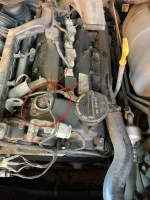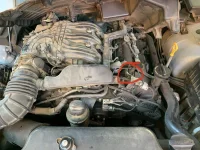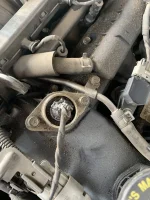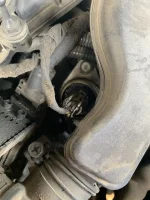johnny1593
2009 Hyundai Genesis 3.8 V6
- Joined
- Nov 16, 2019
- Messages
- 30
- Reaction score
- 3
- Points
- 8
- Location
- California
- Genesis Model Type
- 1G Genesis Sedan (2009-2014)
I’m not a car guy so I apologize in advance to the pros. Just looking for some info.
I would like to know if you can identify the leak in the pictures of my ‘09 genesis 3.8 V6.
I inspected it and the liquid is dark brown color.
Any info or advice would be very helpful to me. Thank you
I would like to know if you can identify the leak in the pictures of my ‘09 genesis 3.8 V6.
I inspected it and the liquid is dark brown color.
Any info or advice would be very helpful to me. Thank you











